Are you intrigued by the mysterious beauty of the black phantom tetra? Wondering how to properly care for these captivating fish in your aquarium? Look no further! In this comprehensive guide, I will unravel the secrets of the black phantom tetra, providing you with all the information you need to create the perfect environment for these stunning creatures.
From tank setup to suitable tank mates, breeding tips to their behavior and diet, I will delve into every aspect of caring for black phantom tetras. Whether you are a seasoned aquarist or a beginner, this guide will equip you with the knowledge and skills to ensure the well-being and longevity of these mesmerizing fish.
So, let’s dive in and unravel the mysteries surrounding the black phantom tetra!
Table of Contents
Key Takeaways:
- Learn how to create the ideal tank setup for black phantom tetras, including lighting, substrate, and vegetation.
- Discover suitable tank mates and the importance of maintaining a harmonious community in your aquarium.
- Gain insights into the behavior and unique characteristics of the black phantom tetra.
- Explore the breeding process and tips for successfully raising black phantom tetra fry.
- Understand the dietary requirements and care necessary to ensure the health and well-being of these captivating fish.
Origin and Natural Habitat of the Black Phantom Tetra
Black phantom tetras, scientifically known as Hyphessobrycon megalopterus, originate from the rivers and streams of South America. Specifically, they are native to the regions of Brazil, Paraguay, and Argentina. These vibrant fish thrive in their natural habitats, which consist of blackwater environments with slow-moving or stagnant water.
Black phantom tetras are well-adapted to living in areas abundant in vegetation, where they can find shelter and protection. These habitats provide them with ample hiding places and create a sense of security. Recreating these natural conditions is essential when setting up an aquarium for black phantom tetras.
Comparison of Black Phantom Tetra’s Natural Habitat and Aquarium Setup
| Natural Habitat | Aquarium Setup |
|---|---|
| Blackwater environment | Recreate blackwater conditions using blackwater-specific additives or natural materials such as peat moss |
| Slow-moving or stagnant water | Use a gentle filtration system or create minimal water movement to mimic the natural flow |
| Abundant vegetation | Add live plants and artificial decorations to provide hiding places and create a natural-looking environment |
By replicating their natural habitat, you can ensure the well-being and happiness of your black phantom tetras. This will help them thrive and exhibit their natural behaviors in the aquarium setting.
Tank Setup and Requirements for Black Phantom Tetras
When setting up a tank for black phantom tetras, it is important to consider their specific requirements. By creating a suitable environment, you can ensure the well-being and thriving of these stunning fish. Here are the key factors to keep in mind:
- Tank Size: Black phantom tetras are a shoaling species, meaning they thrive in groups. To accommodate a healthy shoal, choose a tank of sufficient size. A minimum tank size of 20 gallons is recommended for a small group of black phantom tetras.
- Lighting: Provide appropriate lighting to enhance the aesthetics of the tank and emulate their natural habitat. Opt for gentle lighting to create a dimly lit environment, as black phantom tetras prefer subdued lighting conditions.
- Substrate: Select a suitable substrate for the tank, such as fine gravel or sand. This will mimic the blackwater environment that black phantom tetras are naturally accustomed to in their native habitat.
- Vegetation: Incorporate live plants into the tank to provide hiding places and create a natural look. Black phantom tetras appreciate the presence of dense vegetation, which mimics their natural habitat and helps reduce stress.
- Decorations: Use natural-looking decorations, such as driftwood and rocks, to mimic the blackwater environment and create hiding places. This will allow black phantom tetras to exhibit their natural behavior and feel secure in their surroundings.
- Water Parameters: Maintain optimal water parameters to ensure the health of black phantom tetras. The temperature should be kept between 75-82°F (24-28°C), and the pH level should be slightly acidic to neutral, ranging from 6.5 to 7.5.
Creating a well-designed and properly equipped tank will provide a comfortable and stimulating environment for your black phantom tetras, allowing them to display their vibrant colors and natural behavior.
Behavior and Compatibility of Black Phantom Tetras
Black phantom tetras are known for their peaceful nature, making them an excellent choice for community aquariums. Their behavior is generally calm and non-aggressive, making them suitable tank mates for a variety of other fish species. However, it’s important to consider their specific compatibility requirements to ensure a harmonious and stress-free environment for all aquatic inhabitants.
Demonstration of Peaceful Behavior
Black phantom tetras exhibit shoaling behavior, which means they prefer to swim and live in groups. Keeping them in groups of at least six individuals will not only promote their well-being but also encourage natural behaviors such as schooling and exploration. By providing the appropriate environment and companionship, you can witness their captivating behavior in action.
Choosing Compatible Tank Mates
When selecting tank mates for black phantom tetras, it’s crucial to consider their compatibility in terms of size and temperament. Opting for non-aggressive fish species that share similar water parameter requirements is key to maintaining a peaceful community tank.
Some suitable tank mates for black phantom tetras include:
- Tetras of other species (neon tetras, cardinal tetras)
- Rasboras
- Dwarf cichlids (such as Apistogramma species)
- Peaceful bottom-dwelling fish (such as corydoras catfish)
It’s important to avoid aggressive or fin-nipping fish that may cause stress, injury, or disrupt the peaceful nature of black phantom tetras. By selecting compatible tank mates, you can create a harmonious and visually captivating aquarium community.
To get a better understanding of the behavior and compatibility of black phantom tetras, refer to the table below:
| Compatible Tank Mates | Incompatible Tank Mates |
|---|---|
| Tetras (neon, cardinal) | Aggressive cichlids |
| Rasboras | Aggressive barbs |
| Dwarf cichlids | Fin-nipping gouramis |
| Peaceful bottom-dwelling fish (corydoras catfish) | Territorial bettas |
By carefully selecting compatible tank mates and providing the appropriate social environment, you can ensure that your black phantom tetras thrive and showcase their natural behavior in your aquarium.
Feeding and Care of Black Phantom Tetras
Proper feeding and care are crucial for maintaining the health and well-being of black phantom tetras. These omnivorous fish require a balanced diet and a suitable environment to thrive.
Feeding Black Phantom Tetras
Black phantom tetras are not picky eaters and will readily accept a variety of foods. To ensure their nutritional needs are met, a combination of high-quality flakes and pellets should be provided as their staple diet. This will provide them with essential vitamins, minerals, and proteins.
In addition to dry foods, it is also beneficial to supplement their diet with occasional feedings of frozen or live foods. Brine shrimp and bloodworms are excellent options that add variety and promote optimal health. These foods mimic their natural diet and provide them with additional nutrients.
It is important to feed black phantom tetras small amounts multiple times a day rather than a large quantity once a day. This allows them to consume their food within a few minutes and prevents overfeeding, which can lead to water quality issues.
Water Parameters and Care
Black phantom tetras thrive in well-maintained aquariums with appropriate water parameters. Here are some guidelines to ensure their optimal care:
| Water Parameter | Ideal Range |
|---|---|
| Temperature | 75-82°F (24-28°C) |
| pH Level | 6.5-7.5 |
| Ammonia, Nitrite, Nitrate | 0 ppm |
| Water Changes | 20-30% weekly |
Regular water changes are essential for maintaining good water quality and minimizing the risk of diseases. A weekly water change of 20-30% helps remove accumulated toxins and replenishes necessary minerals.
It is also important to monitor the tank’s filtration system and ensure its efficiency. Proper filtration aids in maintaining stable water parameters and reduces the risk of ammonia and nitrate spikes.
The image depicts a beautiful black phantom tetra feeding, showcasing their captivating behavior and their vibrant black and silver coloration.
Ensuring a well-balanced diet and maintaining proper water parameters are key factors in providing excellent care for black phantom tetras. By following these guidelines, you can create a healthy and thriving environment for your black phantom tetras.
Breeding Black Phantom Tetras
Breeding black phantom tetras can be a rewarding experience. These fish are egg scatterers, meaning the female will release eggs and the male will fertilize them. To successfully breed black phantom tetras, it is important to create the right conditions and provide the necessary resources.
A separate breeding tank should be set up to ensure the best chances of successful reproduction. This tank should be equipped with ample hiding places such as plants or spawning mops, allowing the female to deposit her eggs securely. Providing a proper substrate, such as fine gravel or marbles, can also help protect the eggs from adult fish that may try to consume them.
Water conditions play a crucial role in black phantom tetra breeding. The temperature should range between 75-82°F (24-28°C), which can be achieved with the help of a reliable aquarium heater. The tank should be well-maintained with regular water changes to ensure optimum water quality. Keeping the pH level slightly acidic to neutral, ideally around 6.5-7.5, is also recommended for successful breeding.
Once the breeding tank is prepared and the water conditions are optimized, it is time to introduce a pair or a small group of black phantom tetras. Monitoring their behavior is crucial during this process, as aggression or stress can hinder the breeding process.
When the female is ready to spawn, she will release her eggs in batches. The male will then fertilize the eggs by releasing his milt. It is important to remove the adult fish from the breeding tank once the eggs have been laid, as the parents may eat the eggs.
The eggs will typically hatch within a few days, depending on the water temperature. Once the fry emerge, they can be fed with infusoria or commercially available fry food. Regular monitoring of water quality and providing suitable nourishment will contribute to the health and growth of the fry.
Here is a summarized table highlighting the key steps to successfully breed black phantom tetras:
| Steps for Breeding Black Phantom Tetras |
|---|
| 1. Set up a separate breeding tank with hiding places and appropriate substrate. |
| 2. Maintain optimal water conditions: temperature (75-82°F / 24-28°C) and pH (6.5-7.5). |
| 3. Introduce a pair or a small group of black phantom tetras. |
| 4. Monitor behavior to ensure compatibility and reduce aggression. |
| 5. Remove adult fish once the eggs have been laid to prevent them from eating the eggs. |
| 6. The eggs will hatch in a few days, and the fry can be fed with infusoria or commercially available fry food. |
By following these steps and providing the appropriate conditions, you can increase the likelihood of successful breeding and enjoy the beauty of new generations of black phantom tetras in your aquarium.
Lifespan and Size of Black Phantom Tetras
Black phantom tetras are delightful little fish that can bring both beauty and intrigue to your aquarium. Understanding their lifespan and size is essential for providing them with the best care and ensuring their well-being. Let’s explore the fascinating details of the black phantom tetra’s lifespan and size.
Lifespan of Black Phantom Tetras
The black phantom tetra typically has a lifespan of 3-5 years when cared for properly. To ensure their longevity, it is important to create an environment that meets their specific needs and maintain optimal water conditions. By providing them with a well-balanced diet, suitable tank mates, and regular maintenance, you can promote a healthy and fulfilling life for your black phantom tetras.
Size of Black Phantom Tetras
When fully grown, black phantom tetras reach an average length of 1.5-2 inches (3.8-5 cm). Despite their small size, these vibrant fish possess a striking beauty that captivates the eyes of aquarium enthusiasts. Their contrasting black and silver coloration adds an elegant touch to any tank, making them a popular choice for aquarists looking to create a visually appealing display.
As shown in the image above, black phantom tetras exhibit their stunning colors while gracefully swimming through the water. Their modest size makes them suitable for a variety of aquarium setups, from nano tanks to larger community tanks. Just remember to consider their active nature and need for ample swimming space when selecting their tank size.
In conclusion, understanding the lifespan and size of black phantom tetras is crucial for providing them with the care they deserve. By creating a well-suited environment and meeting their specific needs, you can enjoy the beauty and companionship of these wonderful fish for many years to come.
Common Diseases and Health Issues of Black Phantom Tetras
When it comes to the health of your black phantom tetras, it’s essential to be aware of the common diseases they may encounter. While these fish are generally hardy, they are still susceptible to certain ailments. Two of the most common issues are ich, also known as white spot disease, and fungal infections.
Ich is a parasitic disease caused by a protozoan called Ichthyophthirius multifiliis. It presents as small white spots on the fish’s body, fins, and gills. If left untreated, ich can lead to severe health consequences and even death. Fungal infections, on the other hand, are caused by fungi that thrive in poor water conditions or as a result of an injury or stress. These infections are often characterized by cotton-like growths on the fish’s body.
To ensure the well-being of your black phantom tetras, it is crucial to maintain good water quality. Regular water testing and monitoring of ammonia, nitrite, and nitrate levels are necessary to keep the water parameters within the appropriate range. Clean and properly filtered water plays a significant role in preventing the onset of diseases.
Early Detection and Treatment
Regular observation of your black phantom tetras is vital in detecting any signs of illness at an early stage. Look for changes in behavior, such as decreased appetite, lethargy, hiding, or abnormal swimming patterns. Physical indications, such as unusual growths, discoloration, or visible parasites, should also be noted.
If you notice any signs of illness, it is essential to take immediate action. Isolate the affected fish in a quarantine tank to prevent the spread of the disease to other tank inhabitants. Consult with a veterinarian or a knowledgeable aquarium professional for an accurate diagnosis and treatment plan.
Effective treatment options for ich and fungal infections include the use of appropriate medications, increased water temperature, and salt baths. It is crucial to follow the instructions provided with the chosen treatment and monitor the fish’s response closely. Prompt and proper treatment greatly increases the chances of a successful recovery.
| Disease | Description | Treatment |
|---|---|---|
| Ich (White spot disease) | Caused by the parasitic protozoan Ichthyophthirius multifiliis. Presents as white spots on the fish’s body, fins, and gills. | – Medications containing malachite green or copper sulfate – Increased water temperature (86-88°F or 30-31°C) – Salt baths (1-3% salt concentration) |
| Fungal infections | Caused by fungi that thrive in poor water conditions or as a result of injury or stress. Identified by cotton-like growths on the fish’s body. | – Medications containing antifungal agents such as methylene blue or malachite green – Improvement of water conditions (regular water changes and maintenance) |
By maintaining good water quality, monitoring your fish’s health regularly, and taking immediate action when necessary, you can help prevent and manage common diseases in your black phantom tetras. A healthy and vibrant fish community will provide you with enjoyment and satisfaction in your aquarium hobby.
Water Parameters for Black Phantom Tetras
Ensuring the proper water parameters is crucial for the health and well-being of black phantom tetras. These beautiful fish thrive in specific temperature ranges and pH levels.
Temperature
Black phantom tetras prefer water temperatures between 75-82°F (24-28°C). Maintaining the ideal temperature range is essential for their overall vitality and metabolic functions.
pH Level
The pH level should be slightly acidic to neutral, ideally around 6.5-7.5. This acidity range closely resembles the natural blackwater habitats of black phantom tetras in South America, ensuring their adaptability and resilience.
Water Quality
Regular water testing is important to monitor the ammonia, nitrite, and nitrate levels in the aquarium. These parameters should be kept at safe and stable levels to prevent any stress or health issues for the black phantom tetras.
Performing routine water changes is also crucial to maintain optimal water quality. A reliable filtration system will help remove toxins and impurities, promoting a healthy aquatic environment for your black phantom tetras.
By ensuring the correct water parameters, you can provide a suitable habitat for your black phantom tetras, allowing them to thrive and display their stunning black and silver coloration.
Compatibility of Black Phantom Tetras with Other Fish Species
Black phantom tetras are known for their peaceful nature, making them compatible with a variety of other fish species in the aquarium. When choosing tank mates for black phantom tetras, it is important to consider their specific needs and behaviors to ensure a harmonious environment.
Some suitable tank mates for black phantom tetras include:
- Tetras: Neon tetras, cardinal tetras, and ember tetras are all peaceful species that can coexist with black phantom tetras. They share similar water parameter requirements and will create a stunning display of color and activity in the aquarium.
- Rasboras: Harlequin rasboras and chili rasboras are excellent companions for black phantom tetras. These small, peaceful fish will add movement and vibrancy to the tank.
- Dwarf Cichlids: Species such as German blue rams and Apistogramma can peacefully cohabitate with black phantom tetras. These cichlids are known for their colorful patterns and relatively peaceful temperament.
- Bottom-Dwelling Fish: Corydoras catfish, kuhli loaches, and other peaceful bottom-dwelling species can make great tank mates for black phantom tetras. They occupy different areas of the tank, adding variety to the ecosystem.
It is important to avoid aggressive or fin-nipping fish when selecting tank mates for black phantom tetras. These aggressive species can cause stress and aggression towards the black phantom tetras, leading to potential health issues. Additionally, it is crucial to ensure that the tank is appropriately sized to provide enough space for all the fish to swim and thrive.
Creating a diverse and compatible community of fish in your aquarium will not only add beauty but also provide an engaging and natural environment for your black phantom tetras.
Compatible Tank Mates for Black Phantom Tetras
| Species | Characteristic |
|---|---|
| Tetras | Peaceful, colorful, and suitable water parameter requirements. |
| Rasboras | Peaceful, small-sized fish with vibrant colors. |
| Dwarf Cichlids | Colorful, relatively peaceful, and compatible temperament. |
| Bottom-Dwelling Fish | Peaceful, occupy different areas of the tank. |
Conclusion
Black phantom tetras are stunning and peaceful fish that can make a great addition to any aquarium. With proper care, tank setup, and appropriate tank mates, you can ensure their well-being and enjoy their beauty in your own aquatic environment.
It is important to maintain good water quality for black phantom tetras. Regular water changes and proper filtration are necessary to keep the water clean and free from harmful toxins. Additionally, providing a balanced diet is crucial to their health and vitality. Feeding them high-quality flakes, pellets, and occasional live or frozen foods will ensure they receive the necessary nutrients.
Monitoring their behavior and health regularly is also essential in creating a happy and thriving community of black phantom tetras. Pay attention to any signs of stress or illness, such as changes in swimming patterns or loss of appetite. Taking prompt action and seeking appropriate treatment can prevent the spread of diseases and ensure the overall well-being of your black phantom tetras.
By following these guidelines, you can create a beautiful and harmonious aquarium environment for your black phantom tetras. Their striking black and silver coloration, peaceful nature, and graceful swimming patterns will add a touch of elegance to your aquatic display. So go ahead, invest in the proper care and attention for these mesmerizing fish, and enjoy the rewards of their beauty and presence in your aquarium.
FAQ
What is the average lifespan of black phantom tetras?
Black phantom tetras typically have a lifespan of 3-5 years when properly cared for.
How big do black phantom tetras grow?
Black phantom tetras reach an average length of 1.5-2 inches (3.8-5 cm) when fully grown.
What are suitable tank mates for black phantom tetras?
Suitable tank mates for black phantom tetras include other tetras, rasboras, dwarf cichlids, and peaceful bottom-dwelling fish such as corydoras catfish.
How do I care for black phantom tetras?
To care for black phantom tetras, provide them with a balanced diet consisting of high-quality flakes, pellets, and frozen or live foods. Maintain good water quality through regular water changes and monitor their behavior and health regularly.
How do I set up a tank for black phantom tetras?
When setting up a tank for black phantom tetras, consider their specific requirements such as appropriate lighting, substrate, vegetation, and decorations to mimic their natural habitat.
Can black phantom tetras breed in captivity?
Yes, black phantom tetras can breed in captivity. To encourage breeding, provide them with ample hiding places and a separate breeding tank with appropriate water conditions.
What are the common diseases that affect black phantom tetras?
Black phantom tetras can be susceptible to common diseases such as ich (white spot disease) or fungal infections. Maintaining good water quality and regular monitoring can help prevent the spread of diseases.
What are the ideal water parameters for black phantom tetras?
Black phantom tetras thrive in water temperatures ranging from 75-82°F (24-28°C) and a slightly acidic to neutral pH level between 6.5-7.5.
How to Tell if a Black Phantom Tetra Is Pregnant
If you suspect that your Black Phantom Tetra is pregnant, look out for the following signs:
- Abdominal Enlargement: A pregnant female’s abdomen will gradually grow larger as she carries eggs.
- Dark Spot Near the Tail: Observe for a dark spot near the tail area, which indicates impending spawning.
What Do Black Phantom Tetra Eggs Look Like?
When Black Phantom Tetras lay eggs, you’ll notice small, translucent, and adhesive eggs attached to surfaces such as plants or tank decorations. These eggs are typically round and have a gel-like texture. The exact appearance may vary, but they are usually clear or slightly yellowish.
How Many Black Phantom Tetra in a 10-Gallon Tank?
While a 10-gallon aquarium is the bare minimum, it’s recommended to provide more space. Ideally, consider a tank that holds 20 gallons or more for Black Phantom Tetras. Their small size allows them to thrive in smaller tanks, but a larger setup provides better conditions for their well-being.
References
- International Federation of Online Clubs and Aquatic Societies (IFOCAS)
- Federation of British Aquatic Societies (FBAS)
- Northeast Council of Aquarium Societies (NEC)
- Federation of American Aquarium Societies (FAAS)
- Ornamental Aquatic Trade Association (OATA)
Please check other articles on this website, I have listed some of them here:
Everything You Need to Know About Caring for Blue Zebra Cichlids in Your Aquarium
Everything You Need to Know About Torch Coral: A Stunning Addition to Your Marine Aquarium
The Fascinating Penguin Tetra: Thayeria boehlkei (2023-24)
The Ultimate Guide to Scarlet Badis Care and Breeding
The Ultimate Bamboo Shrimp | Flower Shrimp Guide Which You Dont Want to Miss Out 2023
The Vibrant and Captivating Strawberry Peacock Cichlid: A Guide to Care and Maintenance
Electric Blue Acara: The Ultimate Guide To Care And Keeping
Best Fish for a 40 Gallon Tank: Top Choices for a Thriving Aquarium
Simple Guide to Easy-to-Care-for Aquarium Plants
Discover the Diverse Corydoras Catfish Varieties- A Guide
Get to Know Various Types of Algae Eaters
Master Guide: Best Water Parameters for Goldfish Care 2023-24
Mastering Black Ghost Knife Fish Care: A Comprehensive Guide
Optimal pH Levels for Tropical Fish: Essential Aquarium Guide
Discovering Freshwater Snail Species: An In-depth Guide
Expert Tips for Breeding Guppies: Keys to Successful Fishkeeping
Discover Peaceful Community Fish: Your Guide to Calm Aquatics
Ultimate Guide to Live Food for Betta Fish — Healthy Choices
Complete Guide to Your Perfect Cichlid Tank Setup
Your Guide to the Best Substrate for Planted Aquariums
Essential Guide to Discus Fish Care: Help Your Pets Thrive!
Grow Your Own Eden: Beginner-Friendly Aquascaping Plants Guide
Perfect Neon Tetra Tank Mates: Guide to Aquarium Harmony
Product Review of Eheim Classic vs Professional
The Ultimate Guide to Discus Fish Care
What Fish Can Live With Discus?
Ideal pH for Discus Fish | Aquarium Water Guide
How to Sex Discus Fish?: A Simple Guide for Hobbyists
Complete Discus Fish Tank Setup Guide
Can Discus Fish Live With Angelfish? The Complete Guide
Discus Diet Guide: What Do Discus Fish Eat?
Are Discus Fish Hard to Keep? Insights & Tips.
Optimal Discus Fish Water Parameters Guide
Discus Fish Size Guide 2024: How Big Do Discus Fish Get?
Ultimate Million Fish Guppy Care Guide 2024
Simple Guide to Easy-to-Care-for Aquarium Plants
Grow Your Own Eden: Beginner-Friendly Aquascaping Plants Guide
Hornwort Aquarium Plants: The Ultimate Guide to Care and Maintenance
Aquarium Equipment for Beginners: The Complete Checklist
Feeding Your Aquarium Fish: The Complete Guide
Common Beginner Fishkeeping Mistakes and How to Avoid Them!
Aquarium Plants for Beginners: Easy Care and Beautiful Options
Keeping Your Aquarium Water Clean and Healthy: The Complete Guide
Breeding Aquarium Fish: A Comprehensive Guide
All You Need to Know About Keeping Angel Fish in Your Aquarium
Marine Aquariums: The Ultimate Challenge for Experienced Hobbyists
Tech in the Tank: Must-Have Gadgets for Aquarium Automation
Dwarf Sucking Catfish : The Ultimate Guide to Keeping and Caring for Oto Catfish
The Science of Aquarium Water Chemistry: Understanding pH, KH, and GH
Veiltail Goldfish: The Exquisite Beauty of Flowing Fins
Perfect Neon Tetra Tank Mates: Guide to Aquarium Harmony
Goldfish Care: Beyond the Bowl – Everything You Need to Know
Master Red Tail Shark Care: Tips, Tank Mates & Surprising Traits!
Sheepshead Wrasse Facts & Habitat Guide
Unveiling the Unique Asian Sheepshead Wrasse: A Fascinating Reef Fish with Quirky Behavior
Peacock Wrasse: A Dazzling Addition to Your Aquarium
Vibrant Wrasse Fish: Care Guide & Species Info
Bluestreak Cleaner Wrasse – Vibrant Reef Ally
Coris Wrasse Care Guide for Saltwater Aquariums
Melanurus Wrasse Care Guide & Habitat Tips
The Ultimate Guide to Kuhli Loach
The Ultimate Guide to Popular Loach Species for Freshwater Tanks
Yoyo Loach: The Ultimate Guide to This Fun and Friendly Fish
How to Care for Clown Loaches: The Ultimate Guide for Aquarium Lovers
Optimal Times to Feed Tropical Fish Daily
How to Care for Dojo Loach, the Friendly and Playful Aquarium Fish
How to Care for Zebra Loach: The Ultimate Guide for Beginners
Fu Manchu Lionfish: The Most Beautiful and Mysterious Fish in the Ocean?
The Ultimate Guide to Lionfish Sting: Symptoms, Treatment, and Prevention
Caring for Dwarf Lionfish: Tips & Facts
Hillstream Loach: The Ultimate Guide to Keeping These Unique Fish
The Complete Guide to Platy Fish: Care, Varieties, and Breeding Tips
Endlers Livebearers Care & Breeding Tips
Livebearer Species: The Ultimate Guide
Livebearers vs. Egglayers: Understanding Fish Reproduction
Rosy Barb Care 101: Tank Mates, Size, Breeding, Diet & More
The Complete Oranda Goldfish Care Guide: From Tank Setup, Feeding to Breeding
What Do Koi Fish Eat? Optimal Diet Tips
Koi Fish Lifespan: Facts & Tips Unveiled
Koi Fish Prices: How Much Do Koi Fish Cost?
Unveiling Koi Fish Sizes: How Big Do Koi Fish Get?
Exploring Types of Koi Fish for Your Pond
Butterfly Koi Fish Care Tips and Habitat Guide
Can You Eat Koi Fish? Unveiling the Facts
Top 10 Fish for a Planted Aquarium, everything you need to know
Master Breeding Techniques for Angelfish – A Guide for Hobbyists
Do Angel Fish Need a Heater? Find Out Here!
A Comprehensive Guide to Different Types of Angelfish
All You Need to Know About Keeping Angel Fish in Your Aquarium
I am a passionate aquarist with over 30 years of hands-on experience in fishkeeping. My journey began at a young age, collecting fish from the wild and learning through experimentation. Specializing in tropical fish, I bring a deep understanding of the hobby to FishKeepingMadeSimple. The site provides honest, detailed reviews of essential products and accessories to help fellow enthusiasts create the best environments for their fish.

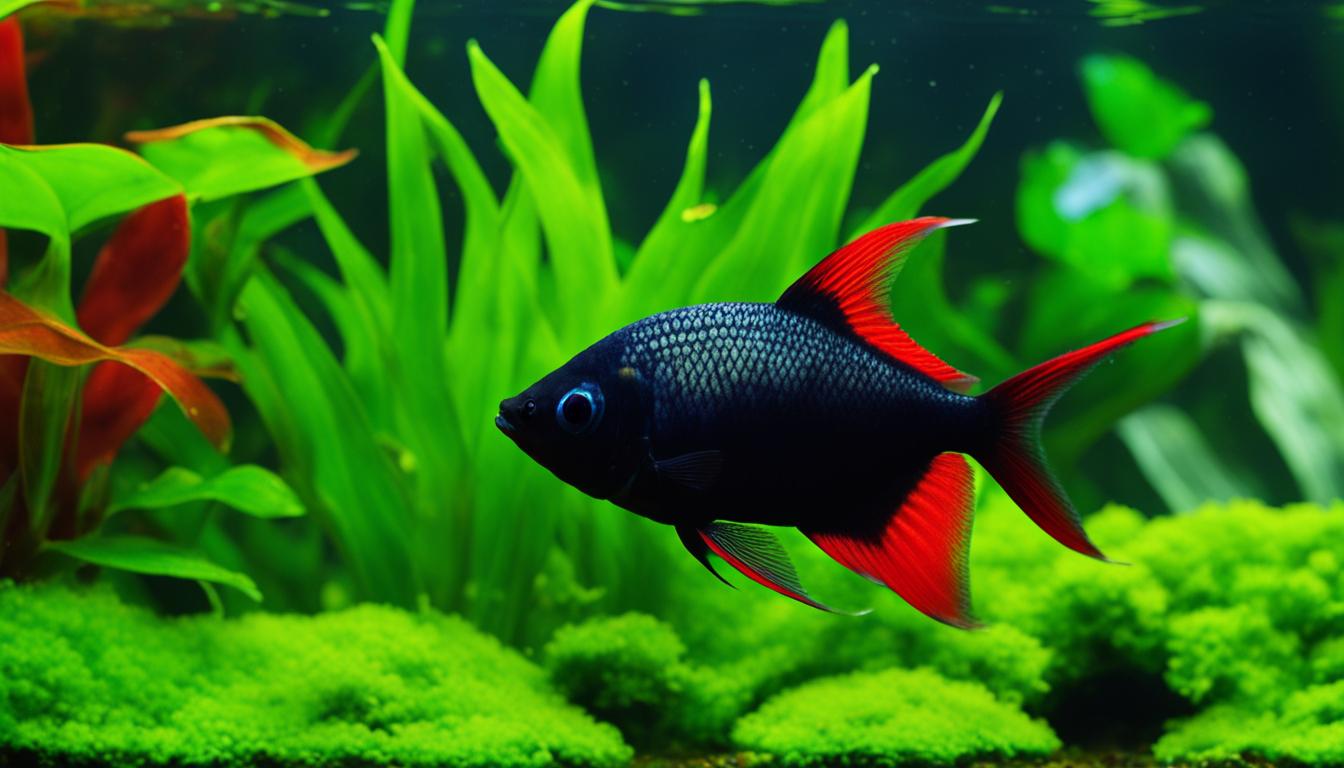
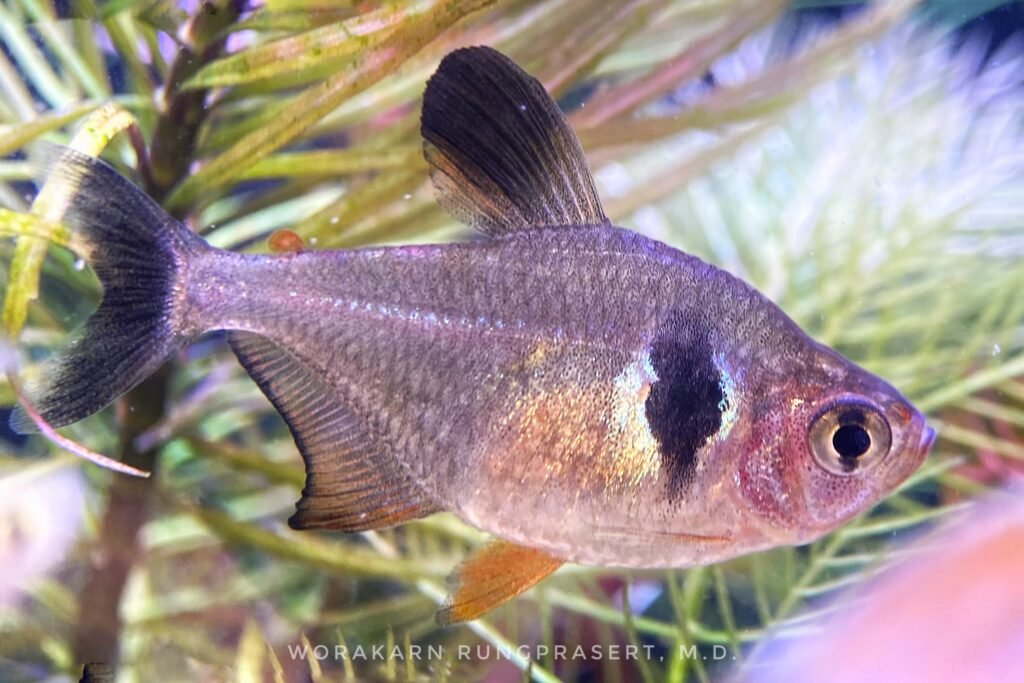

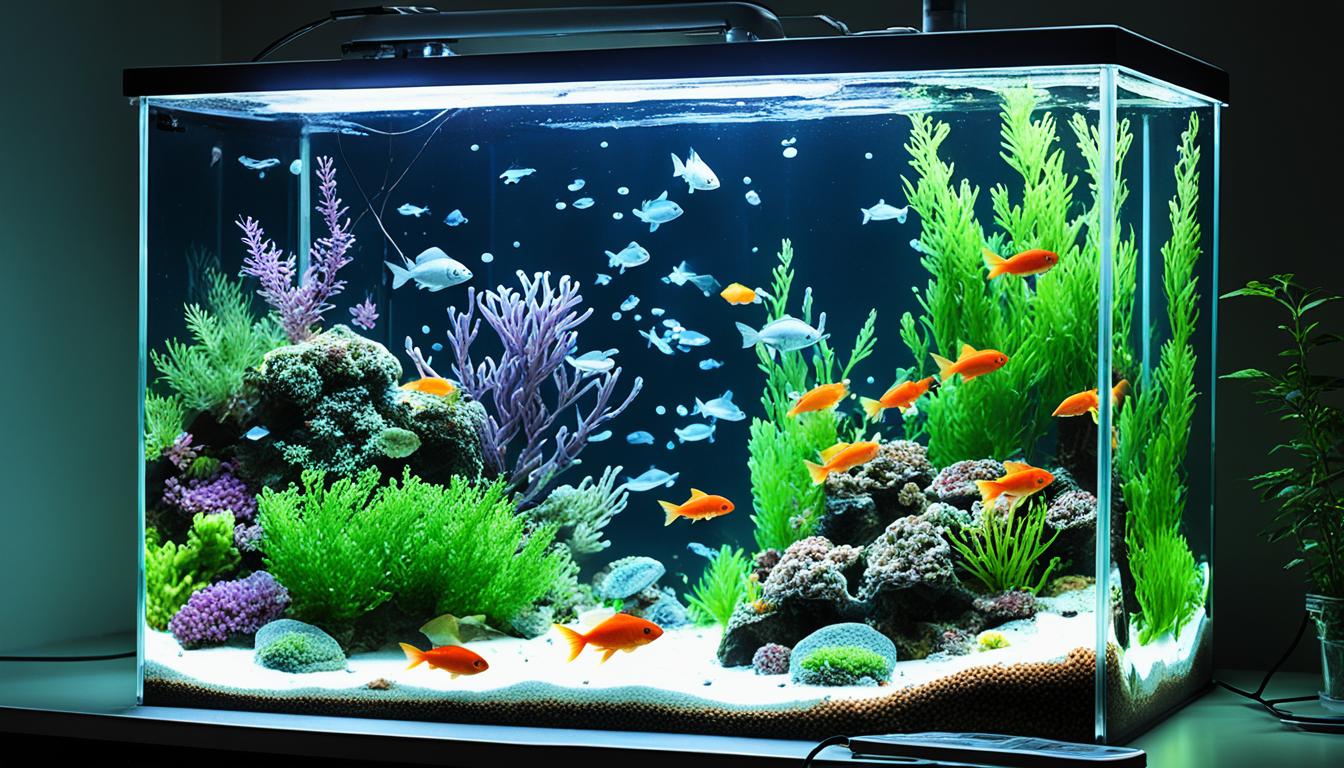
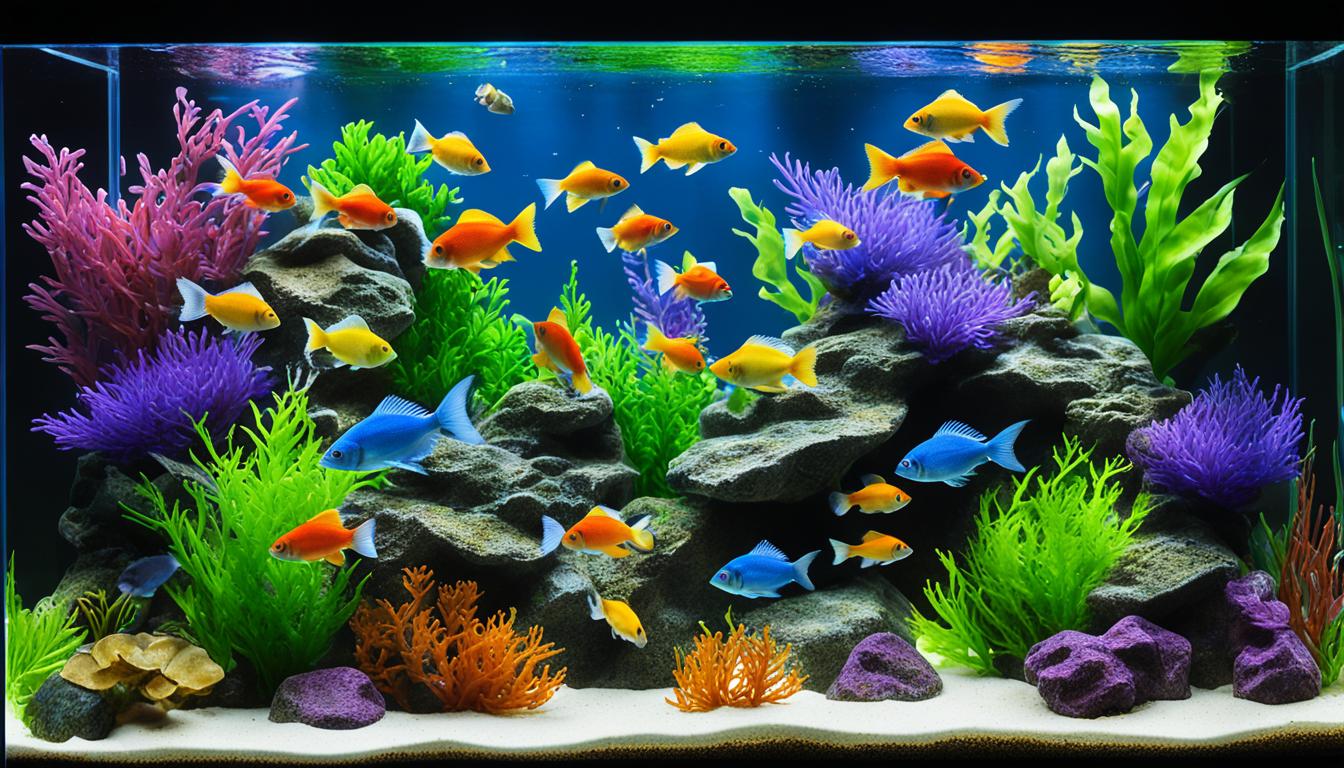
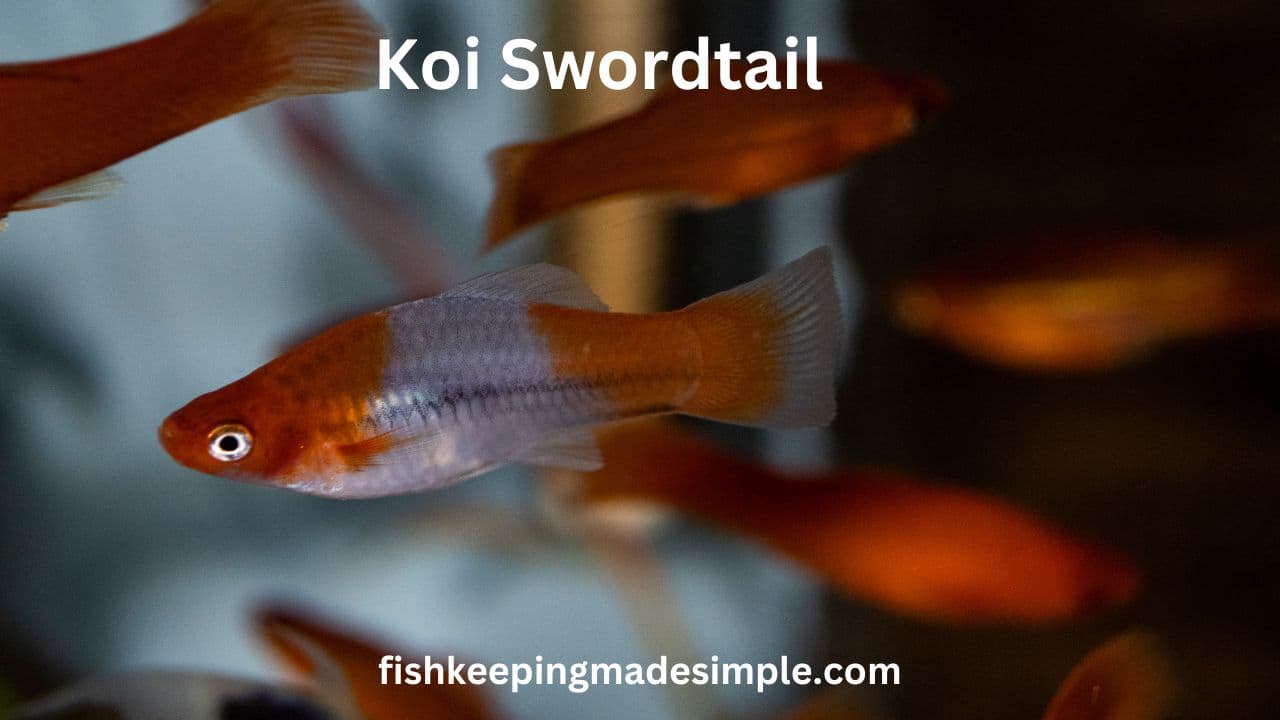

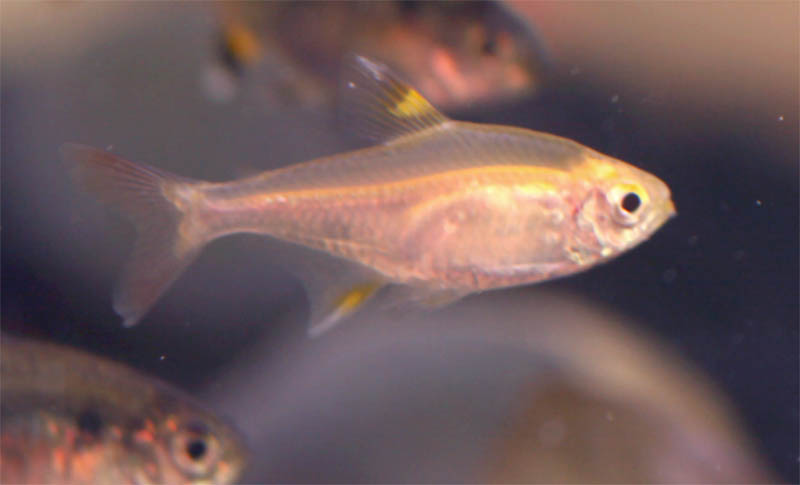
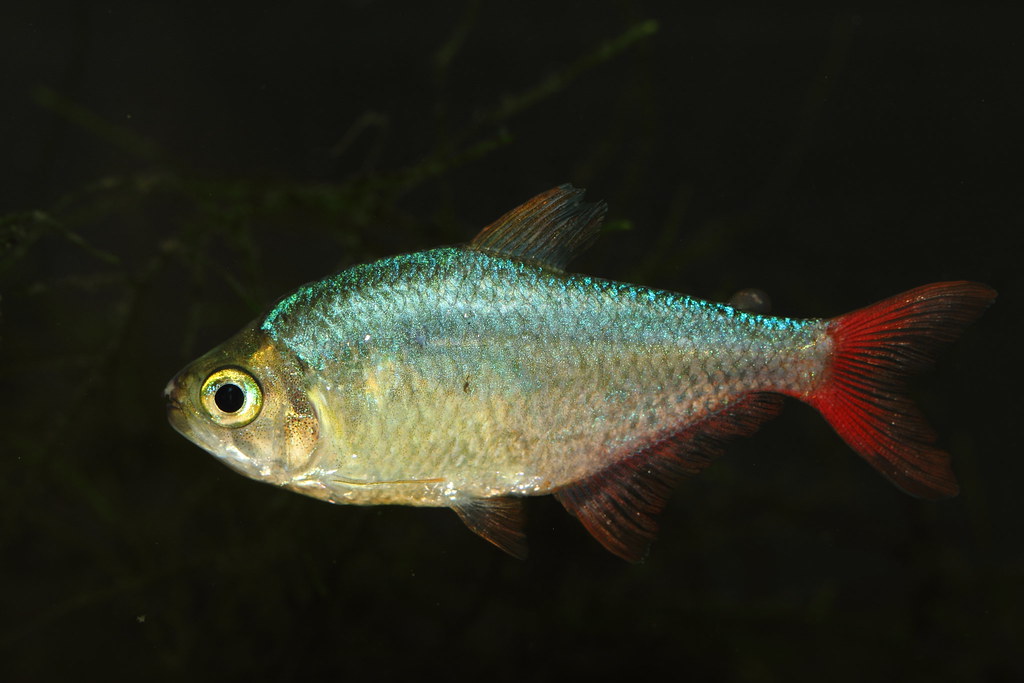
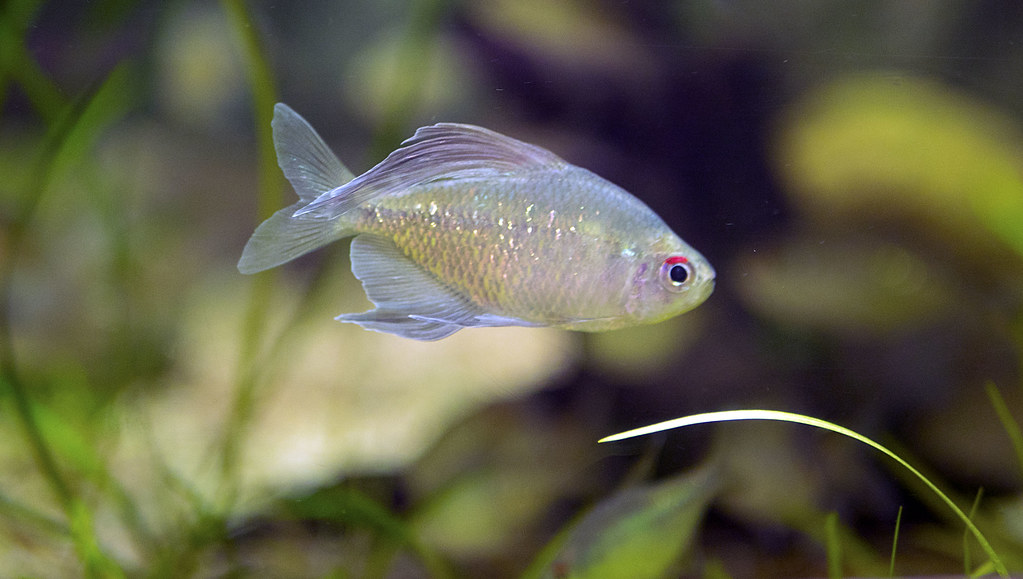
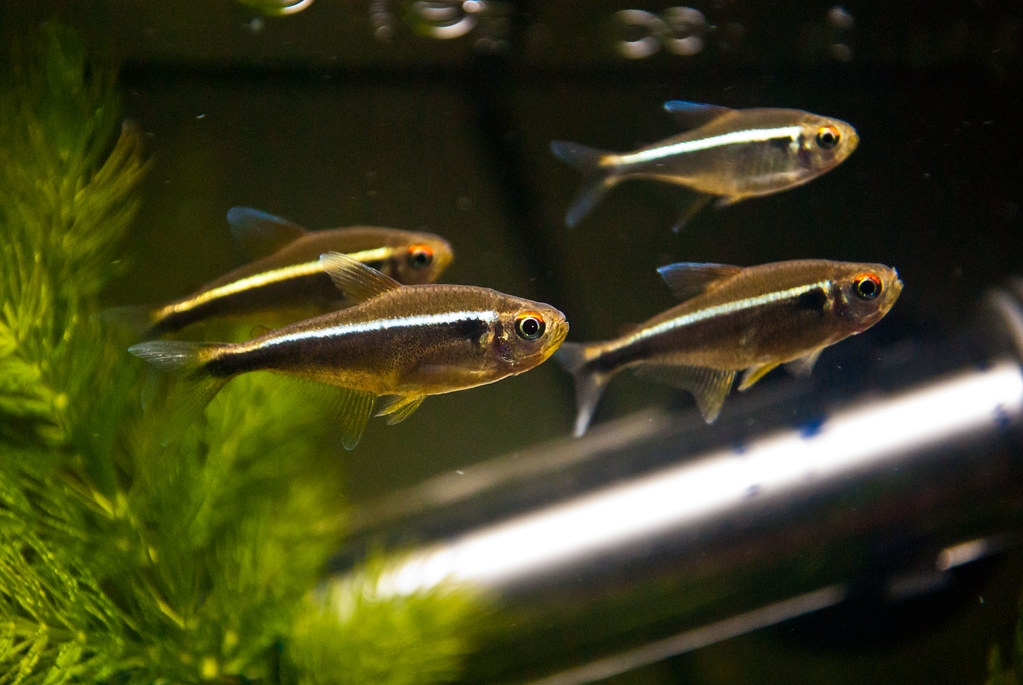
[…] The Bleeding Heart Tetra, with an average size of two to three inches, is a popular choice for aquarium enthusiasts. Originating from South America, these peaceful fish thrive in social groups of at least four individuals. With their vibrant red markings, they add a touch of color to any aquarium setup. […]
[…] a long life. They prefer soft and slightly acidic water with a temperature range of 20-23°C. Red Phantom Tetras are social fish and should be kept in groups of at least six […]